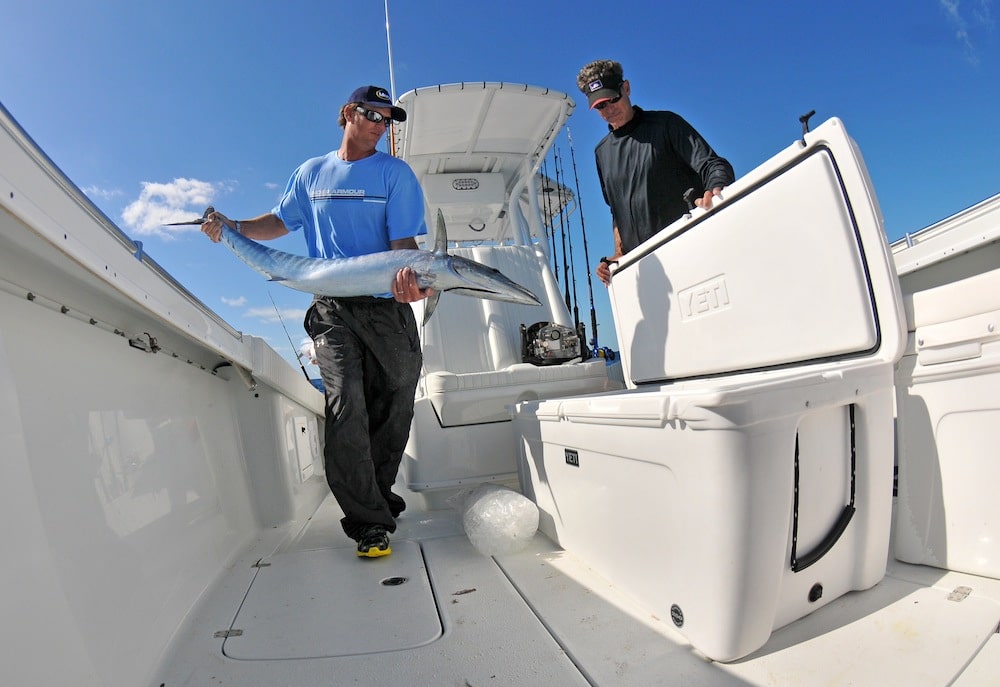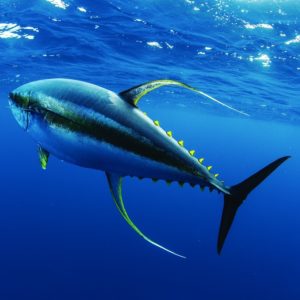
Six Cool Ways to Increase Cold Storage
Think about all of the things you need to keep cold on your boat, ranging from beverages and perishable food to the all-important chum, frozen bait, rigged baits and the fish you plan to keep. It can all take up a lot of room, and that’s not counting ice.
Whether chasing bluefish off New Jersey, tuna off California or king mackerel in the Gulf of Mexico, summer days on the ocean can grow warm enough to threaten your cold stores, the nourishment and good spirits of your crew, and your chances for angling success.
That’s why many of today’s fishing boats incorporate features such as built-in fish lockers and integrated coolers. But let’s look at six ways to improve cold storage even further.
Cooler Upgrade
The new breed of highly insulated, roto-molded coolers from companies such as Engel, Icey-Tek, Orca, Pelican, Yeti and others dramatically extend the time you can keep ice on board. So if you have a conventional cooler, think about upgrading to one of these super coolers. If you do, keep in mind that a thick-walled super cooler has less interior volume than a conventional cooler with the same external dimensions. So upsize the cooler to maintain the same capacity.
Additional Coolers
Boats often have storage for portable coolers under a leaning-post seat or forward of the center console. But look for other places to add a cooler or two on your boat. Creative solutions I’ve seen include lashing an ice chest to the swim platform, mounting a cooler in the middle of the forward cockpit, securing one on the hardtop, placing one on the aft deck of a fly bridge, and strapping one atop an inboard engine box. Some can double as elevated casting platforms.
Wherever you choose, make sure the cooler is battened down well enough so it doesn’t break loose and slide around or slip overboard in rough conditions. Cooler makers offer kits with heavy-duty hardware designed to secure ice chests on deck or elsewhere.
Coffin Boxes
On big center-console boats, there might be room to accommodate a coffin box — a large cooler that sits longitudinally in the middle of the foredeck. Among the companies that offer aftermarket coffin boxes is Frigid-Rigid, which has five sizes. With optional snap-on upholstered pads, these can also double as seating.
With the company’s turn-buckle hold-down system, Frigid-Rigid models are also easy to remove for times when you don’t need the extra cold storage or need access to any in-sole lockers under the box.
If you install a coffin box, keep in mind the extra weight it carries once full of ice; too much weight can alter a boat’s center of gravity, and lead to sluggish performance and poor handling. Also, an aftermarket box often drains onto the deck (once you remove the box’s drain plug), as opposed to a permanently installed box that usually drains overboard. It’s not a huge problem, but it could create a temporary mess on deck.
Kill Bags
A great way to keep fish is with a kill bag, available from brands such as C&H Lures, Canyon Products and Reliable Fishing Products. These insulated soft coolers with zippered tops come in a variety of sizes, and when properly iced, keep fish cold and fresh.
Kill bags are designed to hang from a bulkhead such as under a gunwale or along the transom interior with the bottom of the bag resting on the deck. If your boat has a swim platform, you can also hang one from the transom exterior.
Refrigerated Coolers
A refrigerated cooler is one of the few cold-storage options that does not require ice, and thus gives you more room for provisions. You connect these coolers to an onboard power source to keep drinks and food chilled. Some models can also double as freezers.
Engel, for example, offers 10 models of portable refrigerator/freezers ranging in capacity from 14 to 84 quarts. The smallest models are AC-powered only; the rest will accept AC or DC power. Engel’s largest model — the MT80 — draws a maximum of 3.6 amps at 12 volts, which means a single fully charged, 31-series, marine, deep-cycle house battery should keep it running overnight.
Built-In Fridge/Freezers
If your boat is big enough, consider a built-in refrigerator/freezer from brands such as Dometic, Engel or Isotherm. You’ll find a wide range of sizes and styles, including slide-in units for installations in a cabin or stainless-steel models for exterior galleys. While most marine refrigerator/freezers are AC/DC, some are designed strictly for 12/24-volt DC power.
Since these units dispense with the need for ice, you have more cold storage than with a similar-size cooler. However, most require a shore-power system at the least, and usually a generator as well to provide sufficient juice when the boat’s away from the dock and the main engines are shut down.
Improving cold storage might not seem important until you’re far offshore, and the drinks get warm and the chum stinks. Use these tips ahead of time so you can chill out later.







